#Ifugao Province
Text
UNESCO Champions United Efforts for Ifugao Terraces
UNESCO and stakeholders unite to craft a conservation plan for the historic Ifugao rice terraces in the Philippines.
via Philippine Information Agency, 21 February 2024: UNESCO’s National Commission of the Philippines is spearheading a collaborative effort to conserve the Ifugao rice terraces. A recent meeting at Ifugao State University brought together various stakeholders to develop a comprehensive master plan and heritage code.
The United Nations Educational, Scientific and Cultural Organization (UNESCO)…
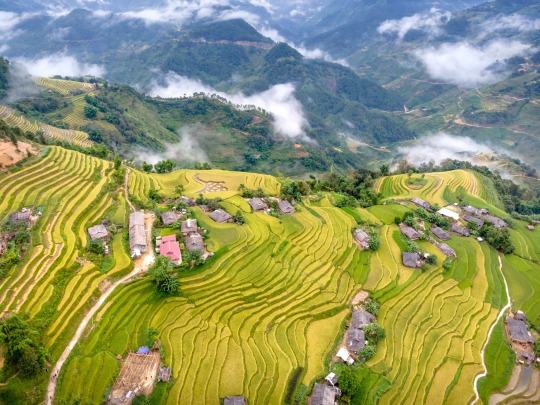
View On WordPress
0 notes
Video
youtube
© Paolo Dala
Baunaue-Sagada-Atok Trip Reel 2023
Here’s the reel from my Banaue - Bontoc-Sagada-Atok Trip with my Construction Management Department mates… I must say, as someone who considers himself as a mountaineer, I’m so happy to finally be able to cross out the Mountain Province from my Philippine Destinations list!
#youtube#Video#Reel#Adventure#Road Trip#Banaue#Ifugao#Sagada#Mountain Province#Atok#Benguet#Philippines
0 notes
Text
A Whole New Chapter
Road Trip!
Day 10, Banaue, Ifugao Province
It's a 211 km, 6-hour drive from Tuguegarao to Banaue. The first half of the drive was fine, a pretty straight but rather bumpy road through the Cagayan valley into the foothills. The last half was the curviest road ever. Nonstop turns as we ascended into the highest mountains on Luzon. And I mean nonstop. I think if you put all the straight sections in the last 100 km together you’d have maybe 1 km total of straight road. Think Lombard Street. 100 km of Lombard Street. To make things worse, we were confronted at least once every kilometer with earth and rock slides, and possibly cleanup crews trying to keep ahead of the mess. Constantly down to one lane. Waterfalls coming down the sides of the mountains, onto or under the roadway, sometimes washing out a lane.
The 2-lane road clings to the mountainsides, with one side going vertically upwards, and the other, well you just don’t want to look. Numerous villages, people, and animals also cling to the steep mountains, making the drive even more exciting. With no place to park other than the shoulder-less roadway, it’s pretty much down to taking turns at uncontrolled one-way traffic through the villages. Somehow you make it through. By the time we got here my arms hurt from all the turns. Oh wait… I wasn’t even driving. I pity our driver!
Farmers utilize the land as they can. Can you imagine working this field?

Why make this arduous trek to Banaue? Banaue is considered a must-see heritage site in the Philippines, for its ancient rice terraces. As much as 2000 years ago, the ancestors of the indigenous Igorot people began carving terraces into the steep hillsides to grow rice; they also built an elaborate irrigation system to collect water coming from the mountains and distribute it among the terraces. The terraces are still maintained and used for rice and vegetable cultivation today. Below are views from our hotel room.


An aside - Road Hazards
Spending so much time on the rural roads you see some interesting (i.e., dangerous) sights. Here are a few of my favorite road hazards from this trip.
Two in one. Trikes are a hazard in themselves, turning in front of you with no warning, driving at night with no lights, going 20 km/h and never pulling over. That’s compounded in a rice-growing region. Newly-harvested rice needs to be dried, right? What better place to do that than right on the highway!

Landslides. These were frequent on the road to Banaue. Not sure if these, or the crews trying to clean them up, posed more of a hazard.

And just not sure what to say about this jeepney...

Days 11-12, Baguio, Benguet Province
During Spanish rule, the area now known as Baguio was organized as a “rancheria” consisting of about 20 houses, populated by Ibaloi people. Their name for the area was “Bag-iw”, their term for the moss that grows abundantly in the cool climate. The Spanish corrupted the name into “Baguio”. Following the Spanish-American war, the area was ‘expropriated’ from the Ibaloi who were forced to move, when the American governor of the Philippines territory wanted a cooler place than Manila to locate the capital during the hot summer months. In 1903 President Theodore Roosevelt signed an executive order setting aside the area as a military reservation, and by 1904 a master design for the city by architect Daniel Burnham was completed. The army “hill base” Camp John Hay was established, and soon features such as a mansion for the governor and a manor to be used for U.S. Army officer’s R&R were built. The mansion today is a museum; the Manor is still used as an upscale hotel (pulling up an old one, see “Mark and Georgia’s 2018 Philippines Trip”, days 20-22). Baguio is one of the most popular vacation spots in the Philippines for Filipinos and many international travelers. It’s just a 5-hour drive or a short flight from Manila so makes a feasible weekend escape from the heat – at over 1500 meters (5000 feet) elevation, we saw daytime highs of 22°C (72°F), pleasant indeed!
The drive from Banaue was another 7-hour, 200+ kilometers, pretty easy at first as we descended back into the Cagayan Valley (rice, rice, more rice, and lots of moo moo cows which Max liked). Rice is planted by hand here, one seedling at a time.

At the head of the valley we again drove on twisty 2-lane roads up into the misty pine-covered mountains, once again a 100 km Lombard Street. Did I say “pine-covered”? Have we been mysteriously transported back to California? No, the area around Baguio is noted for its pine trees (Pinus Kesiya, the most common pine species found in Asia). They are rather tall too, though not quite as tall as those around Graeagle.
We wanted a nice end to our road trip, so booked a couple days in a very nice and Max-friendly hotel. Within walking distance of our hotel is Mines View Park. There are no mines to view any more, but it does offer nice views of Baguio. Here’s Max and Georgia getting to know some elderly Igorot ladies in their colorful dress.

We took Max for a walk in Burnham park (remember the architect Burnham), a large mid-city park with a lake full of swan boats. The park was packed with holiday crowds; it was the Philippines Independence Day!


With its cool climate, Baguio is known for growing cool-weather crops, including lettuce, cauliflower, broccoli, cabbage, and strawberries. Nearby Burnham Park is the Baguio Public Market, a huge venue, easy to get lost in, with hundreds of stalls selling local produce. We bought various fresh veggies to bring back home with us, and Georgia also wanted to get some local red rice. Unless you’re Filipino you probably think there are maybe 3-4 kinds of rice… guess again. Even “Dog Rice”!

That wraps up our 2024 road trip, 13 days and a lot of miles. I haven’t added up how many miles – I’ll do that and also find a good map onto which I can plot our course.
Max (have Wubba will travel) is ready to hit the road again!

2 notes
·
View notes
Text
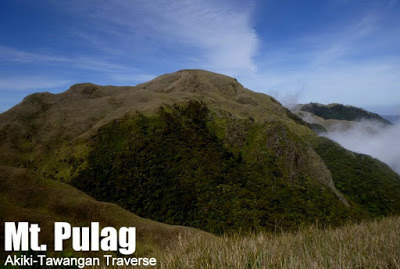
Kabayan, Benguet
Entry point: Akiki Ranger Station, Brgy. Doacan, Kabayan
Exit point: Brgy. Tawangan, Kabayan
LLA: 16°34’58″N 120°53’15″E, 2922 MASL
Days required / Hours to summit: 2-4 days / 9-12 hours
Specs: Major climb, Difficulty 7/9, Trail class 2-4
Features: Pine forests, mossy forests, Scenic grassland summit
The tallest mountain in Luzon and one of the most stunning mountains in the Philippines is Mount Pulag. The height of Mt. Pulag is 2922 meters, or 9586 feet, above sea level. Both novice hikers and seasoned hikers love it as a destination. Additionally, it contains some of the most diverse ecosystems in the nation, with broad pathways flanked by pine trees, mossy forests, and grassland scenery. The mountain is also worthwhile to climb due to its difficult trails and stunning surroundings. Benguet's Mt. Pulag shares a boundary with the provinces of Ifugao and Nueva Vizcaya. More than 500 different plant species can be found on the peak. There are also some endangered animal species there. According to the local tribes, Mt. Pulag is the gods' playground. In a same vein, it is figuratively as close to heaven as trekkers can get.
Mt. Pulag offers a breathtaking view of the Milky Way Galaxy and is known for its sea of clouds, which draws tourists from all over the globe who want to take in the beauty. The Ambangeg Trail, Akiki Trail, Tawangan Trail, and Ambaguio Trail are the four distinct trails on Mount Pulag. While Ambaguio Trail is the longest and most difficult trail, Ambangeg Trail is the easiest and most well-liked trail among hikers.


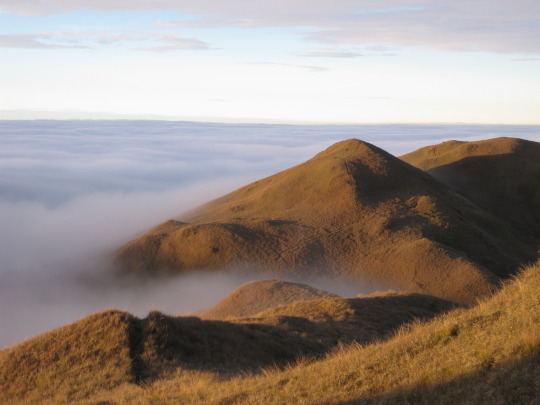
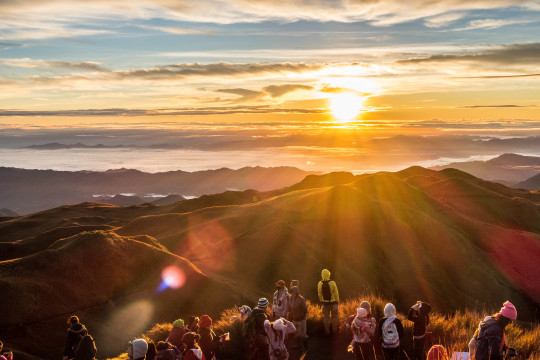

8 notes
·
View notes
Text
Ilocano Lit| A Reflection of Us, Ilocanos

Literature is one of a kind. It opens opportunities for us readers to take a break from reality to places we've never been or will never be. Just by reading with our wide imagination, we will not only be entertained, but we will also gain knowledge, lessons about life and understanding of the world including the people around us. However, have you heard of the richness of Ilocano literature?

"Iloko" is the language while "Ilocano" refers to the people who speak the Iloko language and lives in the provinces of Ilocos Norte, Ilocos Sur, La Union, and certain sections of Pangasinan, Tarlac, Cagayan, Isabela, Nueva Vizcaya, and Nueva Ecija. There are also some Ilocanos in Apayao, Kalinga, Ifugao, and Mountain Province. The entire region is sometimes called “Ilocandia” or the “Ilocos Region”.
The term Ilocano originates from i-, "from", and looc, "cove or bay", thus "people of the bay." A families and clans arrived by viray or bilog, meaning "boat". Ilocanos also refer to themselves as Samtoy, a contraction from the Ilokano phrase sao mi ditoy, "our language here".
One of the reasons why Ilocanos are known is because of the richness of their literature. In fact, it is believed by scholars to be the richest and most highly developed in the Philippines.

Ilocano literature are the literary works written in foreign or Philippine languages by the Ilocano ancestry writers. It is one of the several regional Philippine literatures. Ilocano literature, next to Tagalog and Philippine Literature in English, is one of the most active tributaries to the general Philippine literature.
Want to know how Ilocano literature developed? Let's see its historical background.
Folk songs, riddles, proverbs, lamentations called dung-aw, and epic tales in written or oral form made up the pre-colonial Iloco literature. The dallot, a long, spontaneous poetry given in a sing-song style, was a form of expression used by ancient Ilokano poets along with folk and battle songs.
During the Spanish regime, Iloko poetry was generally patterned after Spanish models. In fact, the earliest known written Iloko poems were the romances translated from Spanish by Francisco Lopez, an Augustinian friar who, in 1621, published his own Iloko translation of the Doctrina Cristiana by Cardinal Bellarmine, the first book to be printed in Iloko.
During the 18th century, the missionaries used both religious and secular literatures among other means to advance in order to further their goal of converting the Ilocanos to Christianity.
The comedia, otherwise known as the moro-moro, and the zarzuela were presented for the first time in the Ilocos in the 19th century. The comedia, a highly picturesque presentation of the wars between Christians and Muslims, and the zarzuela, an equally picturesque depiction of what is at once melodrama, comic-opera, and the skit interminably preoccupied with the eternal theme of boy-meets-girl-who-always-live-happily-ever-after-against-seemingly-impossible-odds are still as popular today as they were when first staged in the Ilocos.
Today, there is a sizable body of Ilocano literature, including newspapers and periodicals like the Bannawag.
Click this link to gain more information: https://en.m.wikipedia.org/wiki/Ilocano_literature
What's more interesting about Ilocano literature is that there is one piece that survived in the Spanish colonial period and still shines up to now!
Who wouldn't know the oldest, yet greatest Ilocano epic, Biag ni Lam-ang?

An illustration depicting the protagonist Lam-ang.
For many generations, Biag ni Lam-ang (The Life of Lam-ang) has been passed down orally, then it was later written down and documented during the Spanish Colonial era in the Philippines. It is notable for incorporating Roman Catholic elements into the piece, such as references by the characters of Lam-ang and Ines Kannoyan to marriage as a sacrament.
It tells the story of Lam-ang's life from avenging his father's murder, to being eaten by the water monster Berkakan, to being reborn and living happily ever after with his love, Ines Kannoyan. Furthermore, the epic poem showed some of the customs, culture, tradition and belief of the Ilocano people of the Philippines, including how they value their family. The story also presented some of the qualities of the people of the Ilocos region such as adventurous, hardy, and brave, loyal as strongly portrayed by Lam-ang.
Click the link below to have access on the summary of the Ilocano epic poem, Biag ni Lam-ang:

Ilocano literature indeed has a special place in everyone's heart. This treasure of ours portrays Ilocano's ways of life, beliefs, cultures, traditions, customs, behaviors, ways of thinking, and many more amazing facts about Ilocanos. This literature speaks about who we are, what we are, and what we used to be. Thus, Ilocano literature is the life and identity of Ilocanos.
This is just a glimpse of the richness of Ilocano literature and there are more amazing facts and information waiting to be discovered by you. At this point, you may realize that Ilocano literature is far different from yours. Ilocano literature might portray things that are not normal in your culture, beliefs, tradition, ways of life and the society you used to, but don't stop. Continue reading Ilocano literature because I guarantee that it will be worth it. You already gain awareness about our differences through literature and soon you will understand these differences which makes you to love and appreciate Ilocanos and Ilocano literature deeply.
As you read various Ilocano literature, you will be exposed to various situations. You will experience to be in the shoes of others and think or act like them. You will gain sympathy from others, understanding about differences, lessons about life and it will open your mind as to what reality is all about. Ilocano literature will change you in a good way.
In conclusion, Ilocano literature brings out the best version of ourselves which contributes to making the world a better place to live. A place that is peaceful, sorrounded by love, full of kindness, free from discrimination, and where everyone is open minded, understanding and normalize differences. We can easily have access to a wide range of information in this generation. At this point, use any various means to feed yourself more information about Ilocano literature such as the technology which includes the internet, mobile applications, gadgets and various social media sites etc.
Read and read and read Ilocano literature.
17 notes
·
View notes
Text

📍Sagada, Mountain Province
The Aguid rice terraces in Sagada are a breathtaking sight to behold. Carved into the mountainside by the Ifugao people, these terraces have been a symbol of perseverance and sustainability for generations. The verdant green of the rice paddies stands in stark contrast to the rugged, yet majestic, mountain range in the background. The terraces possess an intricate irrigation system designed to funnel water from natural sources to nurture the rice crop. Visitors can hike through the terraces to witness the daily activities of the farmers as they tend to the crop. The Aguid rice terraces are truly a sight to behold and represent the creativity and resilience of the Filipino people.
#wowpinas#philippines#exploringphilippines#adventurephilippines#comeseeph#seepilipinas#traversephilippines#chooseph#discoverph#grammerphilippines#igpilipinas#lostinph#mabuhayph#philippinesgram#pilipinasdestination#pinasmuna#pinaswonders#sinopinastraveler#tapphiph#the_ph#wheninsagada
14 notes
·
View notes
Text



Mt. Pulag National Park
 Philippines
Date of Submission: 16/05/2006
Criteria: (ix)(x)
Category: Natural
Submitted by:
Department of Environment and Natural Resources (DENR) - Protected Areas and Wildlife Bureau
State, Province or Region:
Benguet, Ifugao, and Nueva Vizcaya Provinces
Coordinates: N16 30 36 E120 50 20
Ref.: 5030
Export
Word File .doc
Disclaimer
The Tentative Lists of States Parties are published by the World Heritage Centre at its website and/or in working documents in order to ensure transparency, access to information and to facilitate harmonization of Tentative Lists at regional and thematic levels.
The sole responsibility for the content of each Tentative List lies with the State Party concerned. The publication of the Tentative Lists does not imply the expression of any opinion whatsoever of the World Heritage Committee or of the World Heritage Centre or of the Secretariat of UNESCO concerning the legal status of any country, territory, city or area or of its boundaries.
Property names are listed in the language in which they have been submitted by the State Party
Description
Mt. Pulag National Park lies on the north and south spine of the Grand Cordillera Central that stretches from Pasaleng, Ilocos Norte to the Cordillera Provinces. It falls within the administrative jurisdiction of two (2) Regions: Cordillera Administrative Region (CAR) and Cagayan Valley (R2).
The whole park is located within the Philippine Cordillera Mountain Range and is very rugged, characterized by steep to very steep slopes at the mountainsides and generally rolling areas at the mountain peak. Mt. Pulag National Park is the highest peak in Luzon and is the second highest mountain in the Philippines with an elevation of 2,922 m. above sea level.
The summit of Mt. Pulag is covered with grass and dwarf bamboo plants. At lower elevations, the mountainside has a mossy forest veiled with fog, and full of ferns, lichens and moss. Below this is the pine forest growing on barren, rocky slopes. Falls, rivers and small lakes mark the area.
The Park has a large diversity of flora and fauna, many of which are endemic to the mountain. Its wildlife includes threatened mammals such as the Philippine Brown Deer, Northern Luzon Giant Cloud Rat and the Luzon Pygmy Fruit Bat. One can also find several orchid species some of which are possibly endemic to Mt. Pulag, and other rare flora such as the pitcher plant.
Mt. Pulag is an important watershed providing the water necessities of many stakeholders for domestic and industrial use, irrigation, hydroelectric power production and aquaculture.
2 notes
·
View notes
Text
Pearl of the East: Breathtaking tourist attractions in the Philippines
The Philippines is a beautiful archipelago nation with over 7,500 islands and a population of over 105 million people in the Southeast Asian region. There are countless stunning Places to visit in the Philippines, from traditional villages, stunning beaches and islands, picturesque forests, tropical jungles and historical sites.
If you are looking for a tropical paradise with crystal-clear waters and pristine white beaches, the Boracay is the place for you. This postcard-perfect island is home tp stunning white sand beaches, dazzling turquoise waters and vibrant nightlife. Scuba-diving sites and coral reefs beckon for underwater adventure seekers. Whether you want to party the night away, live it up in one of the island’s luxurious resorts or relax in the amazing nature views, Boracay is the perfect destination.
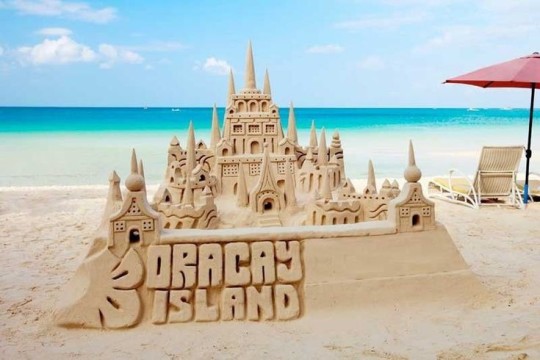

For those who wish to experience the rich culture and traditions of the Philiippines, Banaue village is the place to go. Located in the Ifugao province, this place is the home of the famous Bata Rice Terraces, a UNESCO World Heritage Site. The 2,000-year-old terraces are an extraordinary example of sustainable living. As you wander through the traditional Ifugao villages and step into centuries-old traditions, you’ll be blessed with amazing views of the surrounding mountains and gorgeous sunsets.
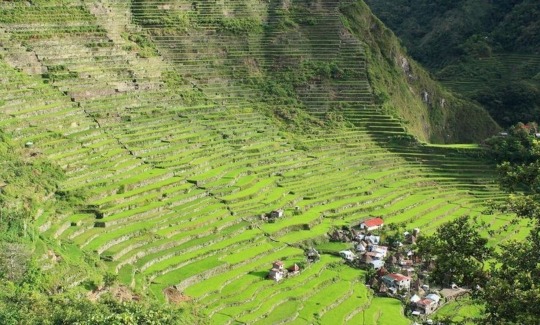
If you're looking for a more urban experience, then the capital city of Manila is the ideal spot. One of the bustling cities in Southeast Asia, Manila is alive with bright lights, malls, night markets and museums. Visit the historical walled city of Intramuros, a UNESCO World Heritage Site. Admire the grand architecture of San Agustin Church and explore the grand Manila Cathedral, both of which date back to the 16th century.


The Philippines has so much more to offer than its stunning beaches, hidden villages, and urban cities. There are many tropical islands, national parks, volcanoes, waterfalls, caves and more to explore. There's something for everyone in the Philippines! So, come and visit the Philippines and experience its beauty and culture.
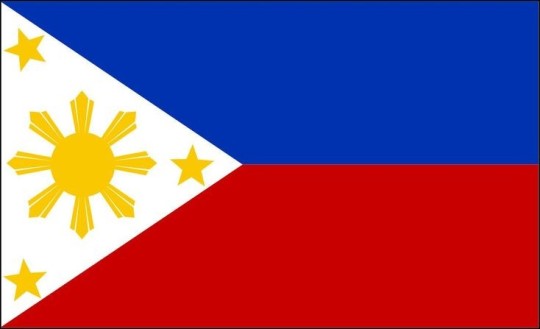
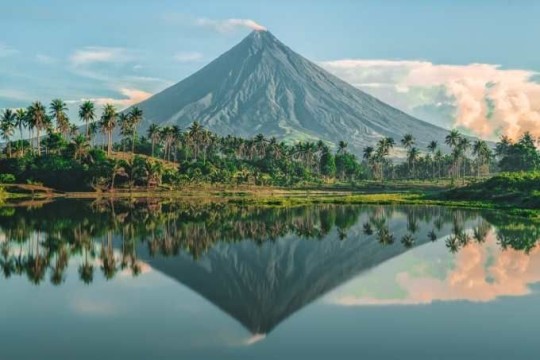

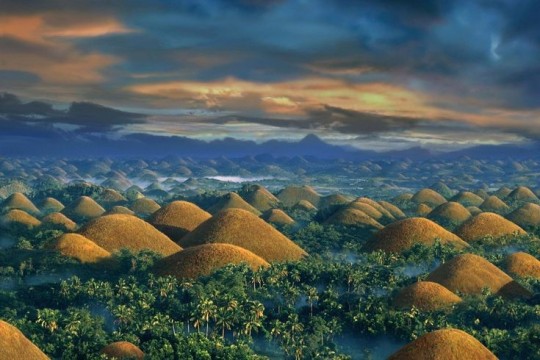

Blog Writer: Keiannaa May Panique
Editor: Rafael Varon
Members:
Iane Loraine Baylon
Jeff Allen Mabag
Hannah May Panique
2 notes
·
View notes
Photo

Banaue, Ifugao Province, Philippines. [OC] [5727 x 3818]
4 notes
·
View notes
Text
Ifugao
Magangdang umaga po!
卒論に向けての研究の第一歩として、6/11にイフガオ州ラガウェで行われた、Gotad Adというお祭りを見に行きました!
会場であるラガウェは、私が研究するDinuy-aという伝統舞踊の発祥の地であり、イフガオ州の中心部に当たるバナウェからジープでさらに1時間ほど南下します。
メイン会場のDon Bosco高校の体育館では、6月1日から18日まで、踊りの他にも芸術作品の展示やバイクレースなど様々な催しが行われており、その周辺には出店や屋外展示などがたくさん並んでいてとても活気がありました!

伝統舞踊のパフォーマンスの様子。
この踊りはラガウェで始まりイフガオ州に広まったため、同じ踊りでも州内の地域によって表現方法が微妙に違っているそうです。私の地元・徳島には阿波踊りがあるので、同じ阿波踊りでも連によって踊り方や構成が違うのと似ているなあと思いました^^
今回の催しはコンペティション形式で、それぞれのグループは地域を代表しており、画面中央右に写っている審査員が最も優れた演技を決定するそう。アリーナを囲むように椅子に座っているのは出番に向けて待機している他の地域の踊り子です。

最も印象に残ったのは、鶏を使った踊り、、
手を話すと鶏が飛んで行ったり、生き物を使った踊りが私には衝撃的でした...!
今回は突然決まった訪問だったので長く滞在することができず、世界遺産の棚田すら見ないで帰ってきてしまいました💦
私を連れてきてくれたガイドさんのお友達をつたって、祭りがあったところとは少し離れた地域に泊まり、現地の生活を体感する貴重な経験もできたので、それについても機会があれば書こうと思います!
次の訪問は今回できたつながりを頼りにもう少し長く滞在する予定なので、舞踊についてももう少し詳しく知ることができればいいなと思います!!
Ifugao
Hello!
I went to Lagawe municipality, Ifugao province on 11th June and saw the festival there!
That was my first step for my research about the traditional dance in Ifugao.
Lagawe is the municipality where the Dinuy-a dance was born. It takes about 1 hour by jeepney from Banaue, which is the center of Ifugao, to go there.
There were also exhibitions of arts and bike races and so on at the gym of Don Bosco High School. And then outside, they have lots of street foods or exhibitions that express characters of each municipality in Ifugao.
I’ve mainly seen dance performances held there.
Dinuy-a dance was born in Lagawe and then spreaded among Ifugao, so these are a bit different depending on the municipality. My home town Tokushima also has their own traditional dance named Awaodori, each group also has different ways of dance. I ‘ve been thinking there are similarities.
This event is a competition and each group is on behalf of their own municipality. There are judges in front of dancers and dancers from other municipalities are sitting around and watching them.
The most impressive thing is that some of them are holding chicken during the dance and sometimes they are flying! It was surprising for me to use a living creature in their performance!
I couldn’t stay long and even see rice terraces which is their signature. Guide accompanied me and I stayed at his friend's house located in Kiangan and Asipulo. I’m happy to experience the lifestyle of a provincial city and I hope I will be able to write about that sometime.
Next time I will stay there more long so I will proceed my research more:))
0 notes
Text
Original post by @ peoplestribunalph (Instagram)
𝐖𝐀𝐓𝐂𝐇: 𝐟𝐨𝐨𝐭𝐚𝐠𝐞 𝐟𝐫𝐨𝐦 𝐭𝐡𝐞 𝐈𝐏𝐓 𝐭𝐞𝐬𝐭𝐢𝐦𝐨𝐧𝐲 𝐨𝐟 𝐁𝐫𝐚𝐧𝐝𝐨𝐧 𝐋𝐞𝐞 (𝐌𝐚𝐲 𝟏𝟕, 𝟐𝟎𝟐𝟒)
An excerpt from the testimony of Brandon Lee on the assassination attempt against him by elements of the Philippine military.
On August 6, 2019, Northern Dispatch correspondent and human rights officer Brandon Lee was shot and seriously injured by 2 unnamed soldiers just outside of his residence in Ifugao province. Lee is a permanent resident of the Philippines married to an Igorot, an indigenous people from the Cordillera region with whom he has a daughter. Prior to this, Brandon had been consistently subjected to different threats and harassment, even in social media, by the members of the Philippine Army for his human rights work and advocacy.
After the incident, he was brought back to the US for further treatment but was rendered quadriplegic because of injury to his C4 spinal cord. He was paralyzed from the chest down, and has been unable to use his hands and legs.
Watch the full recording of Brandon's testimony here: https://www.youtube.com/watch?v=QQSPFieRH-8
Brandon is currently on a speaking tour for just peace in the Philippines with @ichrp_us @justice4brandonlee
#FightLikeBLee
The IPT was co-convened by @friends_ffps and @iadllaw and held in Brussels, Belgium, from May 17-18, 2024. On May 18 the Tribunal issued a unanimous verdict finding President Marcos Jr., former President Duterte, the Government of the Republic of the Philippines, President Joseph Biden, and the U.S. government guilty of war crimes and violations of international humanitarian law.
Read the initial verdict here: https://peoplestribunal.net/wp-content/uploads/2024/05/IPT-2024-INITIAL-Verdict-18-May.pdf
#philippines#philippine politics#politics#human rights#ferdinand marcos sr#ferdinand marcos#rodrigo duterte#duterte#marcos#dds#bbm#bongbong marcos#usa#america#joe biden#biden#military#acab#martial law#videos
0 notes
Text
[Paper] Older Is Not Necessarily Better: Decolonizing Ifugao History through the Archaeology of the Rice Terraces
Challenging myths, new research suggests the Ifugao Rice Terraces date to the 16th century, highlighting dynamic cultural adaptation and resilience.
via Land, 14 February 2024: Recent archaeological studies challenge the long-held belief that the Ifugao Rice Terraces in the Philippines are 2000-year-old symbols of a static, uncolonized culture, suggesting a 16th-century origin instead. This shift aligns with local oral histories and portrays the Ifugao as active participants in their history, adapting to social and environmental changes while…

View On WordPress
#Ifugao (people)#Ifugao (province)#Ifugao Archaeological Project#Marlon Martin (person)#research papers#Save the Ifugao Terraces Movement#Stephen Acabado (person)
0 notes
Text

© Paolo Dala
The Talubin - Can-eo Road
Traveling from Banaue, Ifugao to Sagada, Mountain Province is one of the best road trips I've experienced. To me, the Talubin - Can-eo Road is the most beautiful scenic route in the Philippines.
#Bay-yo Rice Terraces#Rice Terraces#Agriculture#Rural#Mountain#Scenic#Road Trip#Talubin - Can-eo Road#Bontoc#Mountain Province#Philippines
1 note
·
View note
Text
Barrio Boy
My Province Nueva Vizcaya Culture different in Metro Manila, Nueva vizcaya province in philippines and is known as its rich indigenous culture with various tribes such as the ifugao, Gaddang and kalanguya residing in the province and these indigenous culture have a own languages, traditions and a blend of different cultures and influences in term in life style, Vizcaya is more rural and argrarian, with agriculture being a major part of the economy and in terms of food its a same in unique cuisine and overall, there are differences in a culture and life style between Nueva Vizcaya and Metro Manila, both regions contribute to the rich cultural of the philippines and if you go in nueva vizcaya you see the beautiful places and the mountains and if you go in metro manila you see the beautiful city so its a same of beauty but different culture


0 notes
Text





Various heirloom rice varieties
Gilgilang Sungduan Mt. Province
Kotinaw Biket, Ifugao
Ominio 2 Mt. Province
Kotinaw Enggoppor Mt. Province
Photographer: Isagani Serrano – Part of the image collection of the International Rice Research Institute
0 notes
Text
Majestic Banaue Rice Terraces: A Gem on the Philippines Map

Nestled in the heart of the Philippines, the Banaue Rice Terraces stand as a testament to the ingenuity and rich cultural heritage of the Filipino people. Carved into the Cordillera Central mountain range, these terraces are a stunning display of ancient agricultural engineering, earning them a well-deserved spot on the global stage.
Banaue is located in the Ifugao Province, a region known for its vibrant indigenous culture and awe-inspiring landscapes. To locate this enchanting destination on the Philippines map, one must head north from Manila, the country's bustling capital. The journey unveils a scenic route through picturesque mountains and lush greenery, providing a taste of the natural beauty that awaits in Banaue.
The highlight of any visit to Banaue is undoubtedly the iconic Banaue Rice Terraces. Often referred to as the "Eighth Wonder of the World," these terraces were carved into the mountains over 2,000 years ago by the Ifugao people. The engineering marvel allows the cultivation of rice on steep slopes, showcasing the harmonious coexistence of man and nature. Visitors are greeted with mesmerizing views of tiered fields that stretch as far as the eye can see, creating a landscape that is both humbling and awe-inspiring.
Apart from the breathtaking terraces, Banaue, Philippines tourist attractions have a lot on offer for the discerning traveler that make it a well-rounded destination. The Banaue Museum provides a deep dive into the region's history and culture, featuring artifacts and exhibits that narrate the story of the Ifugao people. It serves as an excellent starting point for understanding the traditions that have shaped the landscape and its people.
For those seeking an adventure, trekking through the terraces and surrounding villages is an experience like no other. The Batad Rice Terraces, often considered more challenging to reach, offer a more secluded and authentic encounter with the Ifugao way of life. The trek is rewarded with panoramic views and a chance to interact with locals, gaining insights into their customs and traditions.
The Banaue Viewpoint is another must-visit spot, providing a panoramic vista of the terraces and the valley below. The sunrise and sunset views from this vantage point are simply breathtaking, casting a golden hue over the landscape and turning the terraces into a mesmerizing tapestry of colors.
The Tappiya Falls, nestled amidst the verdant mountains, is a refreshing stop for nature lovers. A trek through lush forests leads to this cascading waterfall, offering a serene escape and a chance to cool off in its crystal-clear waters. The journey to Tappiya Falls also allows travelers to witness the diverse flora and fauna that thrive in the region.
To complete the Banaue experience, exploring the local markets and engaging with the Ifugao people is a must. The vibrant Banaue Market is a hub of activity, showcasing traditional crafts, textiles, and local delicacies. Interacting with the locals provides a unique opportunity to learn about their customs and gain a deeper appreciation for the rich cultural tapestry of the Philippines.
So, mark Banaue on your Philippines map, and embark on a journey to discover the magic of this cultural and natural wonder.
Author Name
Wcities Admin
0 notes